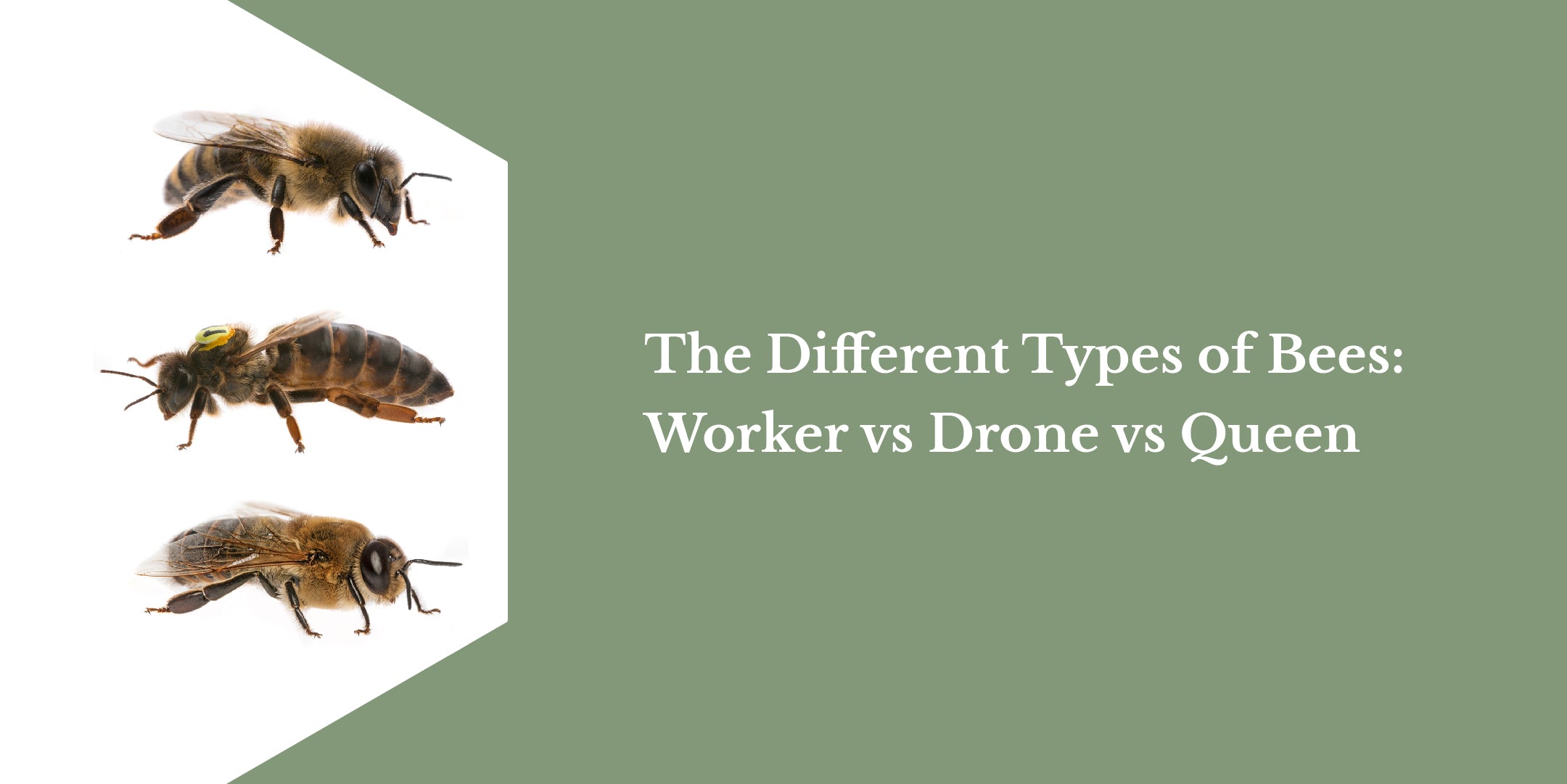The hive is made up of three different types of bees. The worker bee, the drone bee and the queen bee. All three types of bees have different roles to play in the hive. Worker bees are usually in charge of the hive. Drone bees are male bees that are responsible for mating with the queen. And queen bees are the mothers of all of the bees in the colony. Let’s take a closer look at the lives of these bees.
1. Worker bees

Worker bees are the backbone of the bee colony. They carry out a variety of functions necessary for the hive’s survival and prosperity, including cleaning, nursing, guarding and foraging. Worker bees are exclusively female bees. The only difference between a worker bee and a queen bee is that worker bees are sterile and the queen bee is fertile.
Worker bees are in charge of the labour in the hive which includes taking care of the eggs, larvae and the queen. They gather food, like nectar and pollen, from outside the hive. The worker bees process the nectar into honey by adding enzymes and reducing its water content through evaporation. Most importantly, they defend the colony from attackers and predators, often at the expense of their own life.
The lifespan of a worker bee depends on various factors, such as the season and the bees position in the colony. In the spring and summer, worker bees live for up to five to seven weeks. Their labour-intensive work, particularly foraging, wears them out rapidly. However, in the winter season they can live up to four to six months. During this time, they are in charge of sustaining the bee colony and keeping the hive warm over the winter.
2. Drone bees

Drone bees are male bees and their sole purpose is to mate with the queen. They do not gather food, make honey, or defend the hive. Drones fly to the drone congregation everyday where they wait for the sight of a queen. Drone bees have very large eyes and can spot a queen in her nuptial mating flight. Once a queen is spotted, drone bees will mate with her whilst in flight.
A drone’s life usually ends abruptly after mating when his abdomen is ripped off and left attached to the newly fertilised queen. If a drone bee does manage to survive mating, they’ve completed their only purpose and the colony won’t want to waste precious resources on them, meaning they are expelled from the nest. Due to this, the average lifespan of a male drone is short, only 55 days, compared to a worker bee who lives a bit longer.
3. Queen bees

The queen bee is responsible for laying eggs that will eventually become female worker bees and male drones. She stays in the hive most of the time and only leaves when she needs to mate with a drone. She will be able to lay fertilised eggs for the following three to five years thanks to the one mating flight. Even the sex of the eggs the queen lays is up to her. She can fertilise an egg and put it in one cell, turning it into a female, and she can lay an unfertilised male egg when she comes across slightly larger cells meant for larger male drones.
The queen bee has the longest lifespan compared to other bees in the colony. She can live up to five to seven years. This is because she is fed a substance called royal jelly that contains several nutrients that can increase her lifespan.
If you would like to read more queen bees, we’ve got a blog all about fascinating queen bee facts.
Summary
The worker, drone and queen bees all have distinct features and important roles that make them different from each other.
If you are interested in learning more about bees, you can check out our blog. Or if you’re ready to start your beekeeping journey today, explore our range of beehives and bee suits.

